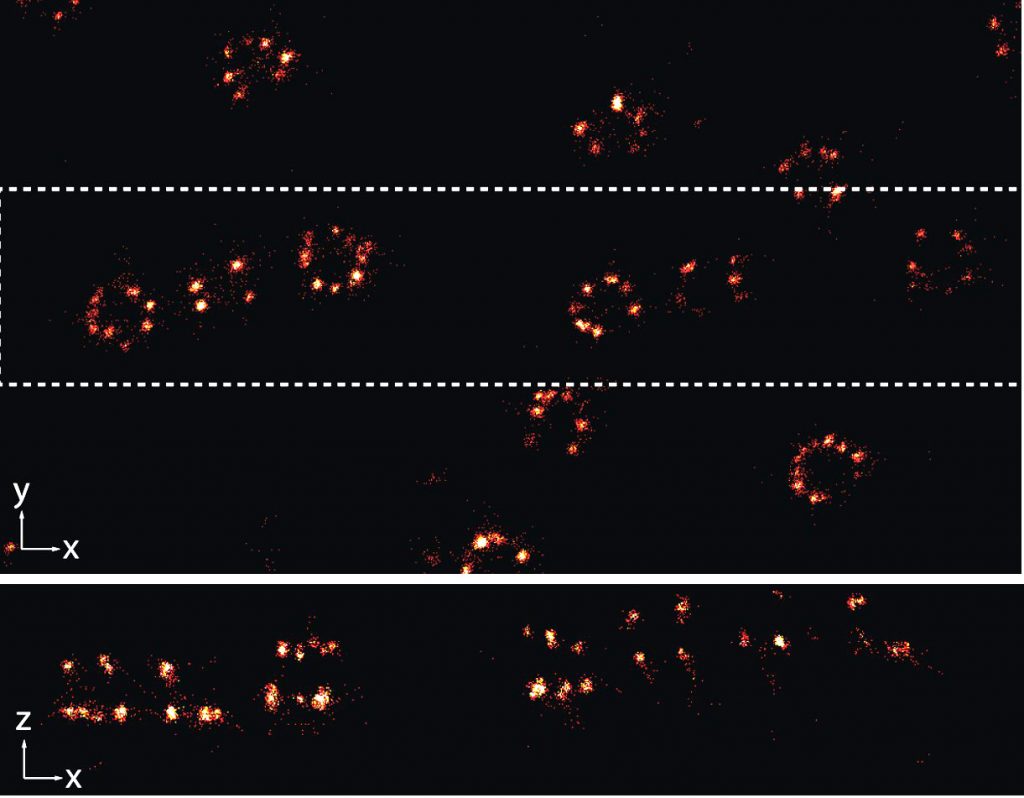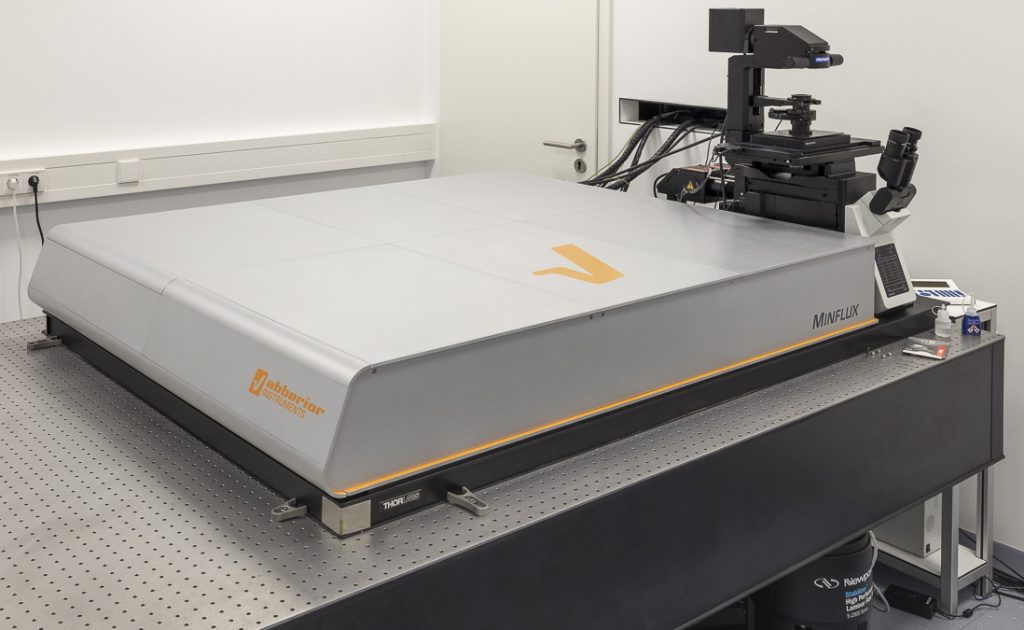MINFLUX
MINFLUX from Abberior Instruments enables imaging of a broad range of biological samples with a spatial resolution in the single nanometer range. This allows to study the structure of large multimolecular protein complexes, such as nuclear pores with unprecedented 3D resolution.
Additionally, MINFLUX tracking allows to study movement of single molecules in living cells with up to 10 kHz sampling rate (one localisation each 100 µs, which is up to 100 x faster than conventional camera-based tracking).
Features:
- MINFLUX imaging with 1-3 nm localisation precision in 2D/3D
- Tracking of single molecules with up to 10 kHz featuring <20 nm resolution
- Nanometre-level active sample stabilization system based on fiducial markers in the sample
Specifications:
- Laser lines: MINFLUX: 640 nm, 561 nm, Confocal: 488 nm, 405 nm
- Two-colour ratiometric MINFLUX imaging with 640 nm or 560 nm excitation
- IX83 inverted microscope stand equipped with a 1.4 NA 100x oil objective

